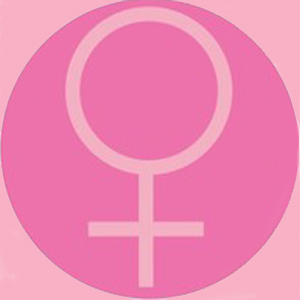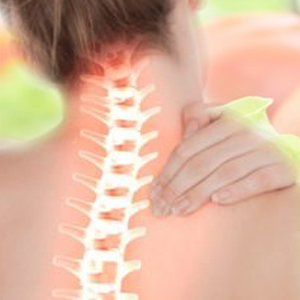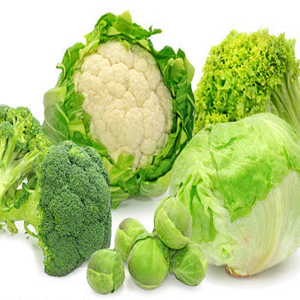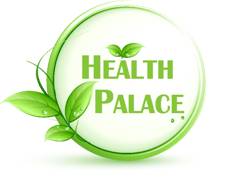Natural Remedies for Hormonal Imbalance in Females | How to Treat Hormonal Imbalance?
Main female hormones include progesterone and estrogens. In a healthy woman in reproductive age, progesterone and estrogen are in harmony performing their important tasks. However, in addition to progesterone and estrogen, other hormones such as pregnenolone, DHEA, and testosterone are also necessary to keep everything in the right balance. All steroid hormones are derived from cholesterol in a metabolic pathway. The first hormone in the line is pregnenolone, which is converted into all other steroid hormones. Although these hormones are correlated, each provides a unique set of physiological properties.
What are the functions of progesterone and estrogen?

Progesterone is essential for ovulation, implantation, healthy pregnancy, breast health, and plays a role in the brain by regulating cognitive functions, mood, social behavior, as well as providing neuroprotective and anti-inflammatory benefits. Progesterone metabolites demonstrate anti-anxiety effects, therefore low progesterone levels may contribute to the increased incidence of anxiety and mood disorders seen in early menopause. Progesterone is also effective in relieving the menopause symptoms with fewer estrogen-related adverse effects.
Estrogen naturally appears in multiple forms in the human body. The main forms of estrogen are including estradiol, estrone, and estriol. Estrogen is mainly produced by ovaries and in a smaller amount by the adrenal glands. After menopause adrenal glands become the important source of estrogen.
Estradiol is the dominant estrogen during the reproductive age. It is important in releasing the egg from the ovaries during each cycle. It is also beneficial for other organs such as the heart, brain, large intestine, and bones. majority of the menopausal symptoms are due to lower production of Estradiol.
Estrone is the main form of estrogen after menopause, and it is produced by the fat tissues. Estrone is metabolized to several metabolites such as 2-hydroxy estrone, 4-hydroxy estrone, and 16-alpha-hydroxy estrone, which then have to be cleared from the body. Some studies link the higher levels of 16-alpha-hydroxy estrone with abnormal cell growth. Certain phytonutrients help to convert the 16-alpha-hydroxy estrone to the 2-hydroxy estrone which prevents cellular overgrowth.
Finally, estriol is the main estrogen during pregnancy, and it is produced by the placenta. Estriol has been studied for its possible immune modulator benefits concerning autoimmune diseases such as M.S. It has also been studied for its benefits in reducing menopausal symptoms.
Other necessary hormones for women's health
Other hormones including pregnenolone, DHEA, and testosterone play an important role in both men's and women's health.
Pregnenolone is produced mainly in adrenal glands, gonads, the brain, and other tissues in the body. Pregnenolone is derived from cholesterol. Pregnenolone is the precursor to all the other steroid hormones. It means pregnenolone can subsequently be converted into all other steroid hormones such as estrogen, progesterone, testosterone, and DHEA. Pregnenolone production declines by aging, and that is found to be related to age-related sleep and cognitive problems. Pregnenolone deficiency is found to be related to reduced brain function and dementia to some degree.
DHEA is produced by adrenal glands, gonads, and the brain, and its age-related decline in production impacts both men and women. DHEA is found to affect the nervous system, immune health, inflammation rate, musculoskeletal health, metabolic health, sexual health, and energy level. Reduced DHEA in post menopause has been associated with mood disturbance, insulin resistance, lower immune function, and more.
Testosterone is produced in women body at a tiny level; but no matter how small its level is in females, lower testosterone level during menopause and in postmenopausal women impacts cardiovascular health, sexual health, mood, bone, and muscle mass. Testosterone therapy in women has been found to improve all the impacted functions.
What are the common health concerns related to female hormonal decline?

As new studies are providing better understanding of the role of each hormone and its tight relation to the hormonal network, it has become more evident that any hormonal deficiency in fact could disturb multiple biological and physiological functions in the body.
Decreased female hormones due to menopause have shown to be associated with an increased risk of several health conditions such as Osteoporosis, Heart disease, Inflammation, Metabolic syndrome, Insulin resistance, liver disease, Neuro-psychological conditions like Alzheimer disease, and dementia.
Lower bone density and bone loss conditions are associated with menopause and pre-menopause which can lead to osteoporosis and an increased risk of fractures. Insufficient estrogen signals disturb the balance between bone formation and the bone breakdown and cause bone loss.
Evidence shows that the frequency and the number of coronary heart disease in women increases sharply after menopause. Heart disease risk factors in postmenopausal women include higher blood pressure, lower HDL, higher levels of blood lipids including high LDL cholesterol, total cholesterol, triglycerides, and high homocysteine levels. In addition, increased chronic inflammation markers and metabolic disturbance are commonly seen in post-menopause. High-density lipoprotein (HDL) cholesterol levels drop significantly after menopause.
Estrogen is found to play a role in maintaining the integrity of the vascular endothelium, where atherosclerotic changes begin.
Neurological conditions are also increased due to hormone deficiencies. As it's been found that estrogen encourages the brain removal of toxic beta amyloids. Pregnenolone and DHEA also perform neuroprotective functions. They play an important role in learning, memory, stress, and mood by participating in the regulation of certain neurotransmitters. Additionally, sleep disorders are commonly known conditions due to hormone deficiency.
Progesterone metabolites are found to provide anti-anxiety property; thus lower levels of in menopause is suggested to be the cause of mood disorders such as depression, anxiety, and sleep problems.
The HRT and its associated risks
In theory, HRT( Hormone Replacement Therapy) is employed to replace the loss of hormone production due to aging, to prevent the symptoms of hormonal decline. But with everyday advancement in science, it has become apparent that the hormonal system is more complex. Steroid hormones are working in an intertwined network while performing their unique tasks. Therefore, for HRT to work according to the biological system, it should be able to harmonize the network of the continuous hormonal signaling system throughout the body.
There are multiple problems found with the classical HRT. Synthesized estrogen triggers higher estrogenic signals in some parts of the body when compared with the normal estrogens produced by a woman’s body and that is a potential risk factor to the adverse effects. Usually, the synthesized estrogen is given in conjunction with a synthetic progestin which stimulates progesterone signaling. Unfortunately, this type of HRT fails to replicate the female natural complex hormonal signaling network and its metabolites.
Another issue with classical HRT is that in fact the process used in synthesizing hormones, includes other hormones, such as androgens and progestins that act differently from those naturally produced by the body, and in different proportions than those made by the body. Therefore it consequently leads to different and improper amounts of hormonal metabolites. For example one of the metabolites from synthesized estrogen is found to be responsible for increased blood clotting risk as a common adverse effect.
Data analysis, however, suggests that the bio-identical HRT has shown to impose lower risks when compared with classical HRT. So it is considered a preferred form of HRT at this time.
How nutritional supports and Phyto-hormones can assist to improve symptoms of female hormonal deficiency?

Symptoms associated with hormonal deficiency can greatly benefits from a healthy lifestyle, physical activity and nutritional supplements. Optimizing performance and the health of tissues and cells help to minimize negative impacts of hormonal deficiency, improve healthy metabolism and mood. Nutritional supplements also complement hormonal treatments and help to achieve better results.
Phytoestrogens are natural plant hormones with a similar structure to estrogen. Although many plants are identified to provide a variety of phytoestrogens, just a few phytoestrogens have been well studied and researched. Most studied of these phytoestrogens are isoflavones and lignans. Plant estrogens are naturally in-active, but they are metabolized by the bacteria in the digestive tract and turned into the active form which can be identified by the body. These activated phytoestrogens attach to the estrogen receptors in the body and modulate estrogen activity.
The estrogenic performance of the Phyto-Estrogens is much weaker than estradiol, and if estradiol is present, they compete with it at the binding sites. Statistical studies suggest phytoestrogens reduce menopausal symptoms and may decrease the risk of some chronic diseases such as cardiovascular disease, osteoporosis, and breast cancer. Studies suggest the benefit of the phytoestrogens is because they bind with Beta receptors of estrogen which has less stimulating effects, while estradiol binds with Alpha types receptors with much more stimulating effects. This particularly helps to minimize the risks associated with unwanted stimulation of the receptors at tissues and therefore make them much safer to use. In addition, Phyto-estrogens have been shown to provide strong anti-inflammatory and anti-oxidative function, which may contribute to the cardiovascular, brain, and neuroprotective benefits.
Proven phytonutrients and nutritional support for healthy female hormone metabolism
Findings from multiple animals and in vitro studies have shown brain-protective properties from phytoestrogen genistein. Genistein has demonstrated anti-apoptotic activity, protecting cultured brain cells from self-destruction over time.
Results from clinical trials indicate that phytoestrogens, mainly from soy foods and isoflavones, can enhance bone mineralization, enhance bone formation, improve bone metabolism and reduce bone resorption. Therefore it may help alleviate bone loss due to menopause.
A great number of studies suggest that natural phytoestrogen genistein mitigates the frequency and severity of menopausal symptoms including hot flashes.
Black cohosh root (Actaea racemosa / Cimicifuga racemosa) has been used for treating gynecologic disorders. Randomized controlled trials support its efficacy and safety for relieving menopausal symptoms such as hot flashes, low libido, sleep disturbance, and related physical and emotional symptoms.
From Traditional Chinese medicine, Dong Quai (Angelica Sinensis) is known as female ginseng and has been used for gynecological symptoms such as painful menstruation or pelvic pain, recovery from childbirth or illness, fatigue, low vitality. Trials have shown that a combination of dong Quai and some other phytonutrients, can relieve symptoms of menopause. In addition, an animal study found Dong Quai to be as effective as estradiol at preventing bone loss.
Licorice root (Glycyrrhiza glabra) exerts provides estrogen-like effects by activating estrogen beta receptors. Findings from a randomized clinical study showed treatment with licorice root extract decreased the frequency and severity of the hot flashes within 2 months when compared with a placebo group. Also in vitro studies suggests Licorice root extract may reduce risks of osteoporosis and cardiovascular conditions.

Formulas with the extract from Vitex agnus-castus (Vitex/ Chasteberry) are known to effectively improve menopausal symptoms including sleep disturbance, hot flashes, and mood. Vitex has been used for a long time for treating female hormone disorders. It is shown to modulate hormonal and neurotransmitter signaling and to relieve premenstrual symptoms. In vitro, vitex compounds bound with estrogen receptors and showed to be able to modulate hormone-responsive genes.
Also, studies found supplementation with phytonutrients such as Dong Quai (Angelica Sinensis) and licorice (Glycyrrhiza glabra) root can improve healthy female hormone metabolism and complement the actions of bioidentical HRT.
Cruciferous vegetables such as, cauliflower, cabbage, kale, and Brussels sprouts contain compounds such as I3C that may help to clear the system from estrogen metabolites associated with abnormal cell growth. I3C prevents the conversion of estrogen to the 16-alpha-hydroxy estrone (a harmful metabolite of estrogen) while increasing conversion to 2-hydroxy estrone which is a beneficial metabolite of estrogen.
EGCG (epigallocatechin gallate) polyphenol from Green tea is shown to down-regulate cancer-related estrogen receptors. It also limits the blood supply to the tumor, while promotes the self-destruction of the affected cells.
Studies suggest that high levels of omega-3 fatty acids improve cellular health. Omega3 reduces oxidative stress and suppresses the production of many inflammatory mediators that contribute to abnormal cell growth.
Vitamin D helps to promote healthy estrogen metabolism and it has been shown cancer-fighting properties. Vitamin D also helps with the absorption of calcium and helps to improve bone density. Vitamin D3 along with vitamin K2 and minerals such as calcium and magnesium improve bone health and prevent osteoporosis. Vitamin B complex helps with the metabolism of fat and carbohydrate. Vitamin B12 and folate helps to lower the homocysteine level and improve cardiovascular health. Taking antioxidant supplements helps to protect against free radicals and unwanted metabolites.
Related Articles:
- Feminine Hygiene Products Can be Toxic & Serious Risk to Health
- How to Maintain and Restore Healthy Blood Lipids Level
- Balanced Hormones and Women's Health
- How to Boost Memory and Brain Health?
Articles and products featured by Health Palace are collected from a variety of sources and are provided as a service by Health Palace. These newsletters, while of potential interest to readers, do not necessarily represent the opinions nor constitute the advice of Health Palace. Presented materials are only for information purposes and do not intent to treat, cure, or prevent any disease.
Select References:
1.Toriizuka K, Mizowaki M, Hanawa T. [Menopause and anxiety: focus on steroidal hormones and GABAA receptor]. Nihon Yakurigaku Zasshi. Jan 2000;115(1):21-28.
2.Labrie F, Martel C, Belanger A, Pelletier G. Androgens in women are essentially made from DHEA in each peripheral tissue according to intracrinology. The Journal of steroid biochemistry and molecular biology. Apr 2017;168:9-18.
3.Davis SR, Wahlin-Jacobsen S. Testosterone in women--the clinical significance. The lancet. Diabetes & endocrinology. Dec 2015;3(12):980-992.
4.Kenny AM, Boxer RS, et al: Dehydroepiandrosterone combined with exercise improves muscle strength and physical function in frail older women. J Am Geriatr Soc.2010 Sep;58(9):1707-14.
5.Weitzmann MN, Pacifici R. Estrogen deficiency and bone loss: an inflammatory tale. J Clin Invest. 2006 May;116(5):1186-94.
6.CDC. Centers for Disease Control and Prevention. Women and Heart Disease Fact Sheet. http://www.cdc.gov/dhdsp/data_statistics/fact_she... Last updated 8/23/17. Accessed 10/24/2017.
7.Tandon VR, Mahajan A, Sharma S, Sharma A. Prevalence of cardiovascular risk factors in postmenopausal women: A rural study. Journal of mid-life health. Jan 2010;1(1):26-29.
8.Fonseca MIH, da Silva IT, Ferreira SRG. Impact of menopause and diabetes on atherogenic lipid profile: is it worth to analyse lipoprotein subfractions to assess cardiovascular risk in women? Diabetol Metab Syndr. 2017;9:22.
9.Jehan S, Masters-Isarilov A, Salifu I, Zizi F, Jean-Louis G, Pandi-Perumal SR, . . . McFarlane SI. Sleep Disorders in Postmenopausal Women. Journal of sleep disorders & therapy. Aug 2015;4(5).
10.Chai NC, Peterlin BL, Calhoun AH. Migraine and estrogen. Current opinion in neurology. Jun 2014;27(3):315-324.
11.Liang K, Yang L, et al. Estrogen stimulates degradation of beta-amyloid peptide by up-regulating neprilysin. J Biol Chem. 2010;285(2): 935-942.
12.Arnal JF, Laurell H, et al. Estrogen receptor actions on vascular biology and inflammation: implications in vascular pathophysiology. Climacteric. 2009;12 Suppl 1: 12-17.
13.Bardin A, Boulle N, Lazennec G, Vignon F, Pujol P. Loss of ERbeta expression as a common step in estrogen-dependent tumor progression. Endocr Relat Cancer. 2004 Sep;11(3):537-51.
14.Asi N, Mohammed K, Haydour Q, Gionfriddo MR, Vargas OLM, Prokop LJ, . . . Murad MH. Progesterone vs. synthetic progestins and the risk of breast cancer: a systematic review and meta-analysis. Syst Rev. 2016;5.
15.Bossard C, Busson M, Vindrieux D, Gaudin F, Machelon V, Brigitte M, . . . Lazennec G. Potential role of estrogen receptor beta as a tumor suppressor of epithelial ovarian cancer. PloS one. 2012;7(9):e44787.
16.FDA. US Food and Drug Administration. Bio-Idenitcals: Sorting Myths from Facts. Available at https://www.fda.gov/ForConsumers/ConsumerUpdates/... Last updated 03/2017. Accessed 09/08/2017.
17.Holtorf K. The bioidentical hormone debate: are bioidentical hormones (estradiol, estriol, and progesterone) safer or more efficacious than commonly used synthetic versions in hormone replacement therapy? Postgrad Med. 2009;121(1): 73-85.
18.Hajirahimkhan A, Dietz BM, Bolton JL. Botanical modulation of menopausal symptoms: Mechanisms of action? Planta Med. May 2013;79(7):538-553.
19.Abdi F, Alimoradi Z, Haqi P, Mahdizad F. Effects of phytoestrogens on bone mineral density during the menopause transition: a systematic review of randomized, controlled trials. Climacteric: the journal of the International Menopause Society. Dec 2016;19(6):535-545.
20.Chen MN, Lin CC, Liu CF. Efficacy of phytoestrogens for menopausal symptoms: a meta-analysis and systematic review. Climacteric: the journal of the International Menopause Society. Apr 2015;18(2):260-269.
21.Gencel VB, Benjamin MM, Bahou SN, Khalil RA. Vascular effects of phytoestrogens and alternative menopausal hormone therapy in cardiovascular disease. Mini reviews in medicinal chemistry. Feb 2012;12(2):149-174.
22.Sirotkin AV, Harrath AH. Phytoestrogens and their effects. European journal of pharmacology. Oct 15 2014;741:230-236.
23.Chiang SS, Pan TM. Beneficial effects of phytoestrogens and their metabolites produced by intestinal microflora on bone health. Appl Microbiol Biotechnol. Feb 2013;97(4):1489-1500.
24.Landete JM, Arques J, Medina M, Gaya P, de Las Rivas B, Munoz R. Bioactivation of Phytoestrogens: Intestinal Bacteria and Health. Critical reviews in food science and nutrition. Aug 17 2016;56(11):1826-1843.
25.Ko KP. Isoflavones: chemistry, analysis, functions and effects on health and cancer. Asian Pacific journal of cancer prevention: APJCP. 2014;15(17):7001-7010.
26.Fritz H, Seely D, Flower G, Skidmore B, Fernandes R, Vadeboncoeur S, . . . Fergusson D. Soy, red clover, and isoflavones and breast cancer: a systematic review. PloS one. 2013;8(11):e81968.
27.Fritz H, Seely D, McGowan J, Skidmore B, Fernandes R, Kennedy DA, . . . Fergusson D. Black cohosh and breast cancer: a systematic review. Integrative cancer therapies. Jan 2014;13(1):12-29.
28.Seidlova-Wuttke D, Jarry H, Becker T, Christoffel V, Wuttke W. Pharmacology of Cimicifuga racemosa extract BNO 1055 in rats: bone, fat and uterus. Maturitas. Mar 14 2003;44 Suppl 1:S39-50.
29.Seidlova-Wuttke D, Jarry H, Pitzel L, Wuttke W. Effects of estradiol-17beta, testosterone and a black cohosh preparation on bone and prostate in orchidectomized rats. Maturitas. Jun 16 2005;51(2):177-186.
30.Shahnazi M, Nahaee J, Mohammad-Alizadeh-Charandabi S, Bayatipayan S. Effect of black cohosh (cimicifuga racemosa) on vasomotor symptoms in postmenopausal women: a randomized clinical trial. Journal of caring sciences. Jun 2013;2(2):105-113.
31.NIH. National Institutes of Health. Black Cohosh. https://ods.od.nih.gov/factsheets/BlackCohosh-Hea... Last updated 3/3/2017. Accessed 10/24/2017.
32.Ross SM. Menopause: a standardized isopropanolic black cohosh extract (remifemin) is found to be safe and effective for menopausal symptoms. Holistic nursing practice. Jan-Feb 2012;26(1):58-61.
33.Nisslein T, Freudenstein J. Effects of an isopropanolic extract of Cimicifuga racemosa on urinary crosslinks and other parameters of bone quality in an ovariectomized rat model of osteoporosis. J Bone Miner Metab. 2003;21(6):370–376.
34.van Die MD, Burger HG, Teede HJ, Bone KM. Vitex agnus-castus (Chaste-Tree/Berry) in the treatment of menopause-related complaints. Journal of alternative and complementary medicine. Aug 2009;15(8):853-862.
35.Nahidi F, Zare E, Mojab F, Alavi-Majd H. Effects of licorice on relief and recurrence of menopausal hot flashes. Iranian journal of pharmaceutical research: IJPR. Spring 2012;11(2):541-548.
36.Somjen D. Knoll E, Vaya J, et al. Estrogen-like activity of licorice root constituents: glabridin and glabrene, in vascular tissues in vitro and in vivo. J Steroid Biochem Mol Biol. 2004;91(3):147–155.
37.Acharya A, Das I, Singh S, Saha T. Chemopreventive properties of indole-3-carbinol, diindolylmethane and other constituents of cardamom against carcinogenesis. Recent Pat Food Nutr Agric. 2010 Jun;2(2):166-77.
38.Marconett CN, Singhal AK, Sundar SN, Firestone GL. Indole-3-carbinol disrupts estrogen receptor-alpha dependent expression of insulin-like growth factor-1 receptor and insulin receptor substrate-1 and proliferation of human breast cancer cells. Molecular and cellular endocrinology. Nov 05 2012;363(1-2):74-84.
39.Czuczwar P, Paszkowski T, Lisiecki M, Woźniak S, Stępniak A. The safety and tolerance of phytotherapies in menopausal medicine – a review of the literature. Przeglad menopauzalny = Menopause review. Mar 2017;16(1):8-11.
40.Dietz BM, Hajirahimkhan A, Dunlap TL, Bolton JL. Botanicals and Their Bioactive Phytochemicals for Women's Health. Pharmacol Rev. Oct 2016;68(4):1026-1073.
41.Ambrosone CB, McCann SE, et al. Breast cancer risk in premenopausal women is inversely associated with consumption of broccoli, a source of isothiocyanates, but is not modified by GST genotype. J Nutr. 2004;134(5): 1134-1138.
42.Bawa S. The significance of soy protein and soy bioactive compounds in the prophylaxis and treatment of osteoporosis. J Osteoporos. 2010 Mar 8;2010:891058.
43.Donzelli A, Braida D, et al. Neuroprotective effects of genistein in mongolian gerbils: estrogen receptor-beta involvement. J Pharmacol Sci. 2010;114(2): 158-167.
44.Goh SY, Loh KC. Gynaecomastia and the herbal tonic "Dong Quai". Singapore Med J. 2001;42(3, pp. 115–116.
45.Jiang K, Jin Y, Huang L, Feng S, Hou X, Du B, . . . Li L. Black cohosh improves objective sleep in postmenopausal women with sleep disturbance. Climacteric: the journal of the International Menopause Society. Aug 2015;18(4):559-567.
46.Kaszkin-Bettag M, Beck S, Richardson A, Heger PW, Beer AM. Efficacy of the special extract ERr 731 from rhapontic rhubarb for menopausal complaints: a 6-month open observational study. Altern Ther Health Med. Nov-Dec 2008;14(6):32-38.
47.Al-Bareeq RJ, Ray AA, Nott L, Pautler SE, Razvi H. Dong Quai (angelica sinensis) in the treatment of hot flashes for men on androgen deprivation therapy: results of a randomized double-blind placebo controlled trial. Canadian Urological Association journal = Journal de l'Association des urologues du Canada. Feb 2010;4(1):49-53.
48.Fang ZZ, Nian Y, Li W, Wu JJ, Ge GB, Dong PP, Zhang YY, Qiu MH, Liu L, Yang L. Cycloartane triterpenoids from Cimicifuga yunnanensis induce apoptosis of breast cancer cells (MCF7) via p53-dependent mitochondrial signaling pathway. Phytother Res. 2010 Jun 17. [Epub ahead of print].
49.Wuttke W, Seidlova-Wuttke D, Gorkow C. The Cimicifuga preparation BNO 1055 vs. conjugated estrogens in a double-blind placebo-controlled study: effects on menopause symptoms and bone markers. Maturitas. Mar 14 2003;44 Suppl 1:S67-77.
50.Farabegoli F, Barbi C, et al. (-)-Epigallocatechin-3-gallate downregulates estrogen receptor alpha function in MCF-7 breast carcinoma cells. Cancer Detect Prev. 2007;31(6): 499-504.
51.Thangapazham RL, Passi N, et al. Green tea polyphenol and epigallocatechin gallate induce apoptosis and inhibit invasion in human breast cancer cells. Cancer Biol Ther. 2007;6(12): 1938-1943.
52.Thangapazham RL, Singh AK, et al. Green tea polyphenols and its constituent epigallocatechin gallate inhibits proliferation of human breast cancer cells in vitro and in vivo. Cancer Lett. 2007;245(1-2): 232-241.
53.Abbas S, Lineisen J, Slanger T, et al. Serum 25-hydroxyvitamin D and risk of post-menopausal breast cancer—results of a large case-control study. Carcinogenesis. 2008 Jan;29(1):93-9.
54.Fleet JC, DeSmet M, Johnson R, Li Y. Vitamin D and cancer: a review of molecular mechanisms. The Biochemical journal. Jan 01 2012;441(1):61-76.
55.Thyer L, Ward E, Smith R, Fiore MG, Magherini S, Branca JJ, . . . Pacini S. A novel role for a major component of the vitamin D axis: vitamin D binding protein-derived macrophage activating factor induces human breast cancer cell apoptosis through stimulation of macrophages. Nutrients. Jul 08 2013;5(7):2577-2589.
56.Yu HL, Li L, et al. Neuroprotective effects of genistein and folic acid on apoptosis of rat cultured cortical neurons induced by beta-amyloid 31-35. Br J Nutr. 2009;102(5): 655-662.
57.Li Y, Li S, Meng X, Gan RY, Zhang JJ, Li HB. Dietary Natural Products for Prevention and Treatment of Breast Cancer. Nutrients. Jul 08 2017;9(7).
Recent Posts
-
Maintain A Healthy Heart Rhythm With Integrative Medicine
Maintain A Healthy Heart Rhythm With Integrative Medicine;Usually, abnormal heart rate or arrhythmi …4th Feb 2021 -
How To Protect Against COVID-19
Coronaviruses are a large group of viruses that cause many common human and animal infections. In hu …30th Jun 2020 -
How to Prevent Gallstones from Forming? | Natural Supplements for Gallstones
How To Prevent Gallstone Formation?Gallstones are hard deposits made of cholesterol or bilirubin f …4th Mar 2020




